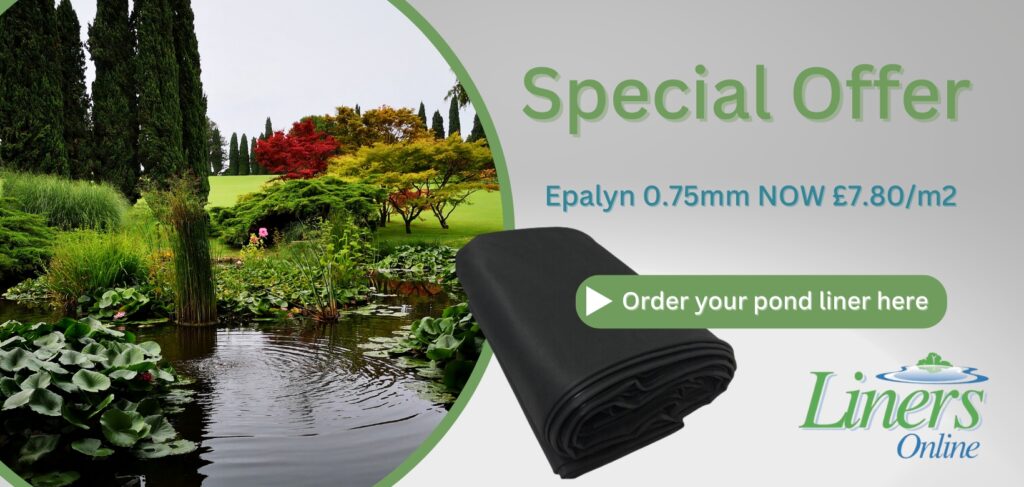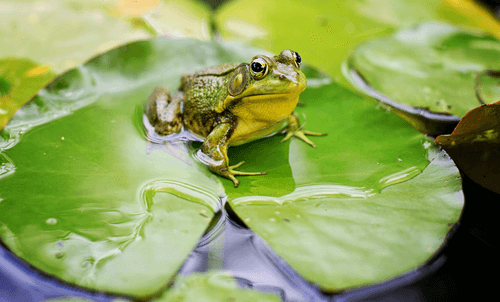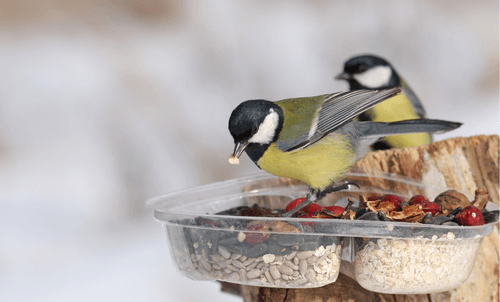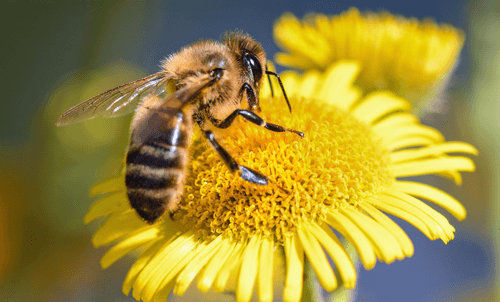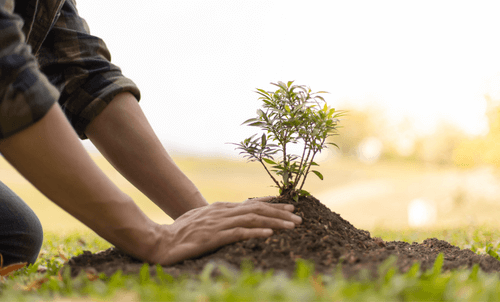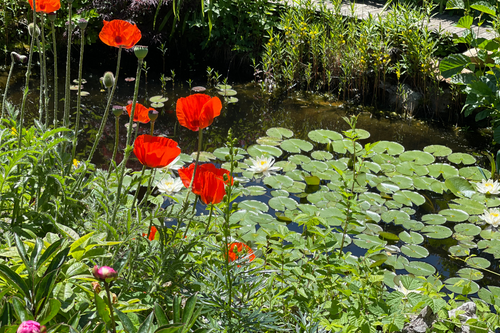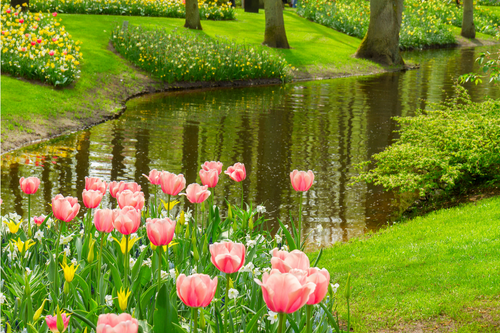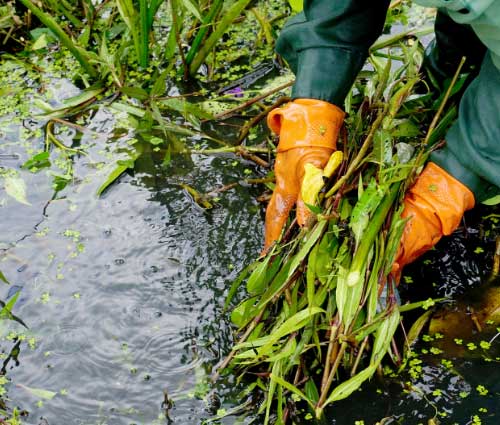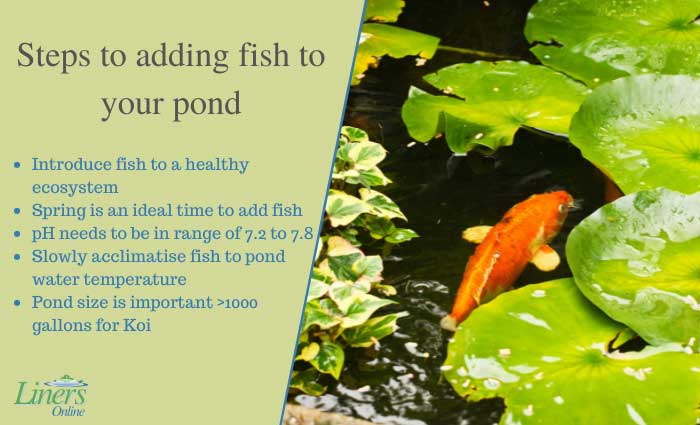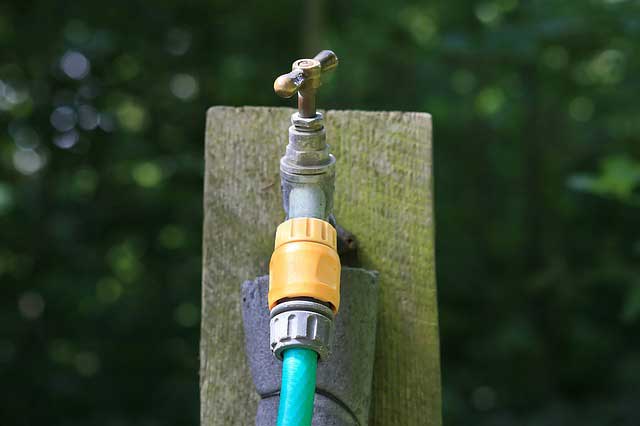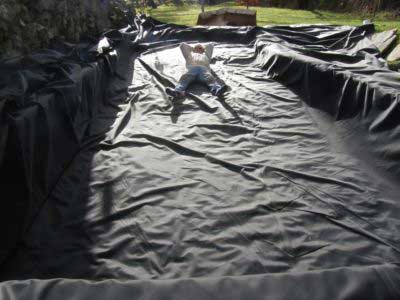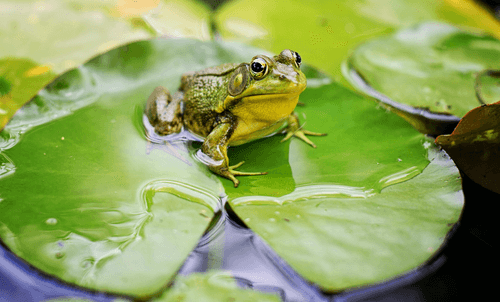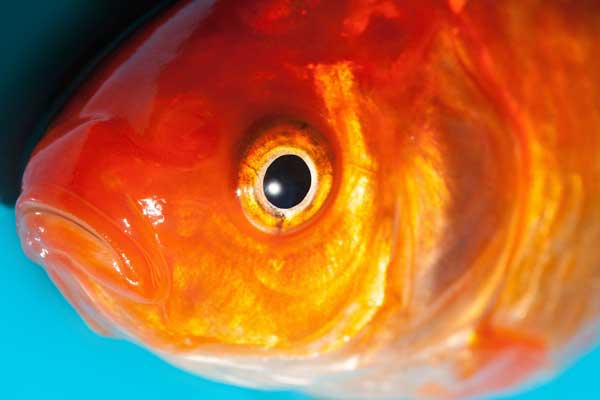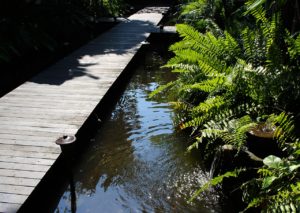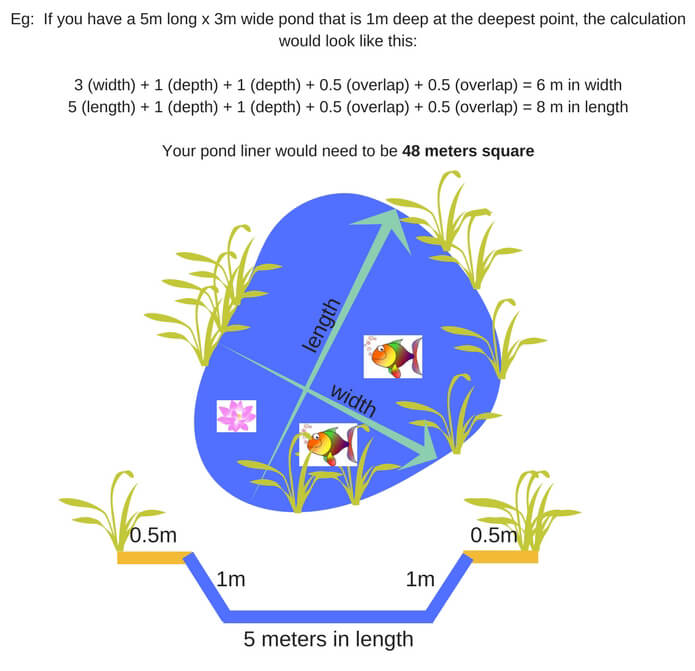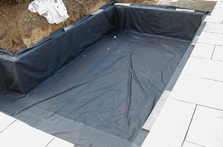EPDM pond liner (ethylene propylene diene monomer) is the ideal solution for water retention and widely used to line lakes, garden ponds and man-made streams. EPDM is a synthetic rubber with properties very similar to butyl pond liner and has become a leading product for lining garden ponds. EPDM pond liner has many superior technical features such as resistance against root penetration, unaffected by UV radiation, durability, withstands adverse temperature range of -40 to +150 degrees Celsius and has a proven long service history. This pond liner is seen as the cheaper yet slightly more superior alternative to Butyl pond liner.
EPDM is sold under many different brand names. Liners Online sell EPDM under the name, Epalyn and is available in three different thicknesses; 0.75mm, 0.85mm and 1.0mm.
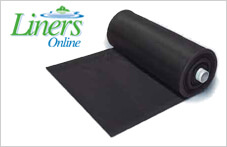
When you type “EPDM” into the search engines you may also see a choice of roofing specialist websites. This is because the synthetic rubber membrane is a very popular choice in the roofing industry but it is not to be confused with EPDM pond liners, also known as Epalyn pond liner as sold by Liners Online. The rubber membrane used to line ponds, lakes, streams, water storage tanks and reservoirs is fish-friendly and is also used to line potable water tanks. For this reason EPDM pond liner should only by ordered from companies in the aquatic trade.
EPDM pond liner is available in three thicknesses of 0.75mm, 0.85mm and 1.00mm. This makes EPDM pond liner suitable for a range of application types from the humble garden pond through to the most demanding large pond or lake builds.
For natural ponds, EPDM pond liner can be supplied as a single sheet to your required size, and then trimmed to the exacting shape once installed. We highly recommend installing above a tough performing geotextile pond underlay. It’s function is to protect your pond liner from being punctured by sharp stones, rocks, roots and other soil debris that might be pushed up due to natural ground movement.
Your pond design plans may include covering above your liner with soil, gravel, rocks or pebbles for a more natural look. If so, Geotextile protective underlay should also be used both above and below the pond liner to prevent costly and time consuming repairs.
For formal shaped ponds (with vertical sides and a flat base), including Koi and ornamental ponds, EPDM can be fabricated and supplied as a box-welded pond liner. The advantage of this design is that they can be installed into a pond dug-out without any unsightly folds or creases. This 3-D effect pond liner is fabricated in our factory and supplied as a single item.
7 reasons why you should buy an EPDM pond liner
- Most flexible pond liner therefore moulds readily into the shelves, contours and features of a pond
- Suitable for ponds of all shapes and sizes and can be supplied as a single sheet or box-welded liner for formal vertically sided ponds
- Greater puncture resistance versus PVC or Butyl
- Very durable because of it’s resistance to UV rays and ability to withstand an extreme temperature variation from -40 to 90 degrees Celsius
- Resistant to microbial and algae attacks therefore requires little maintenance once installed
- Non-toxic so it doesn’t leach chemicals into the water – won’t harm fish, wildlife or aquatic plants
- Superior weathering resistance so won’t crack or go brittle with age. EPDM Epalyn pond liner has over 40 years of experience and most companies offer a 25 years guarantee
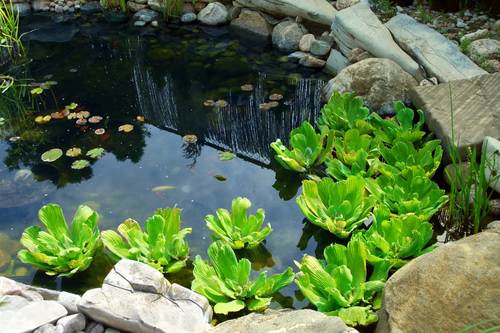
Pond liner performance
An EPDM pond liner is guaranteed over a life-time for orders under a 100 m squared or for 25 years for orders over 100m square. If installed above a Geotextile protective underlay it is likely to provide a lifetime of water retention. However, should your pond be visited by a sharp clawed creature, you can be assured that rubber pond liners are readily repairable using Mastic tape or a pond liner repair kit.
Liners Online are passionate about the pond liners we supply and have years of experience in the business including on site installation and fabrication. Please visit our website for details on our pond liners and our Epalyn pond liner kits.






